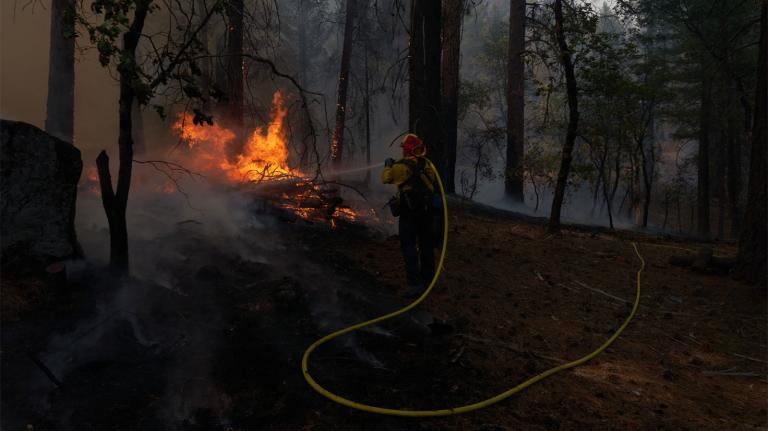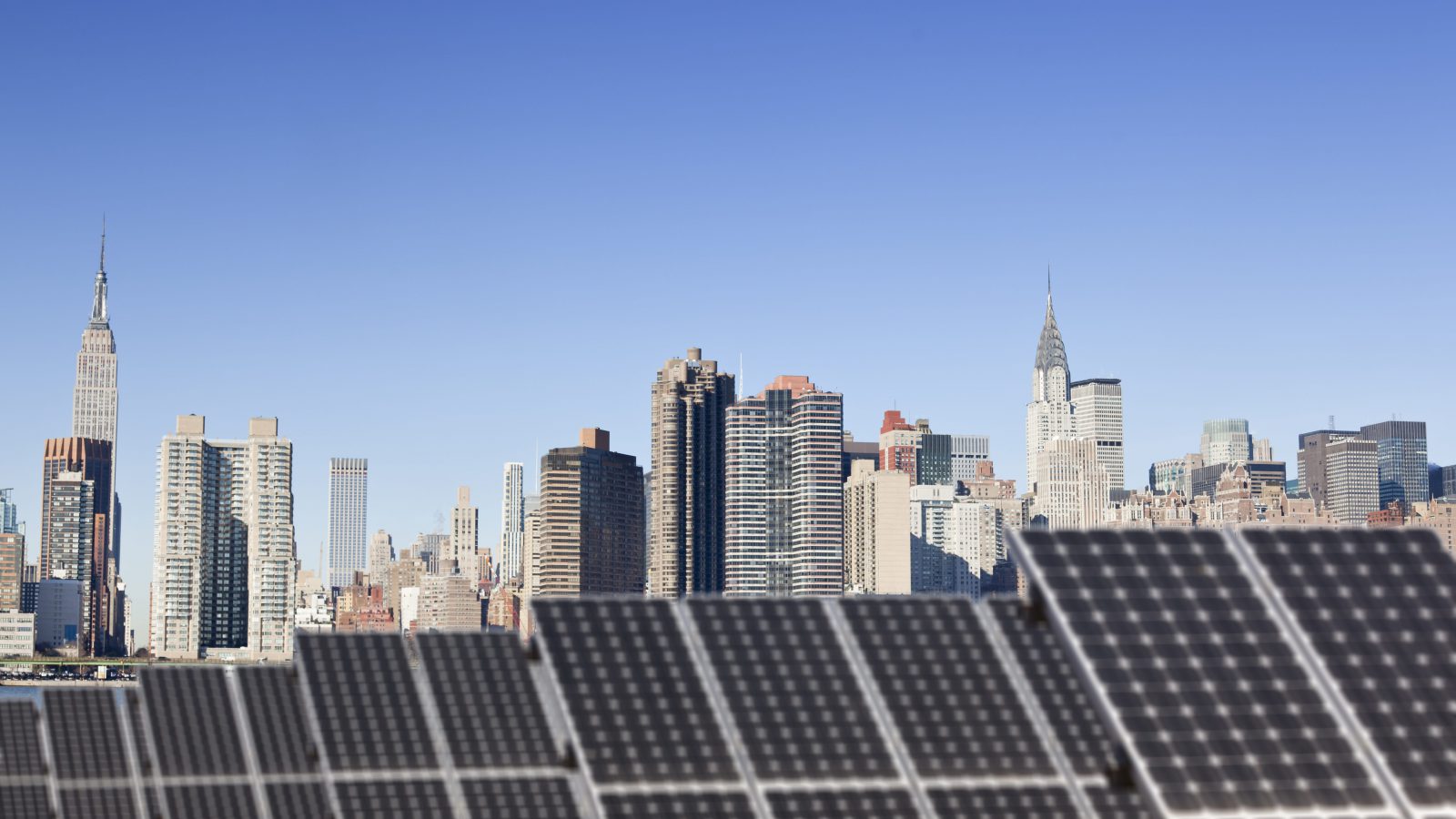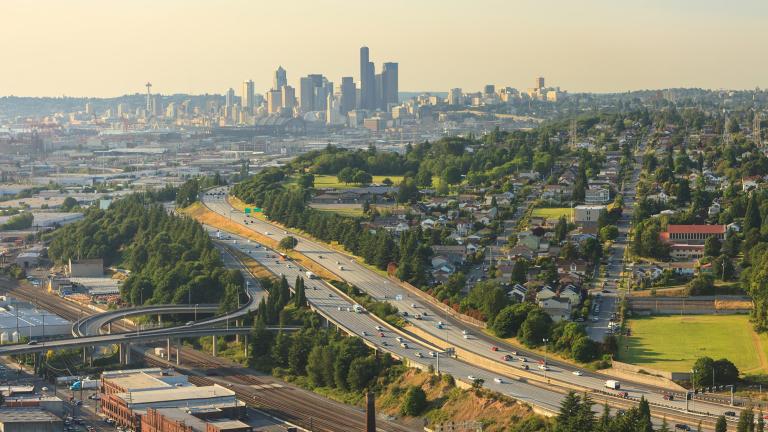It’s not your imagination: The climate crisis is getting worse. According to NOAA, July 2021 was the hottest month recorded since humans started tracking the Earth’s temperature 142 years ago. This year will likely go down as one of the top ten warmest on record. Dramatic heat waves, like the one this summer in the Pacific Northwest, caused a number of hospitalizations and sudden deaths. But even when warmer temperatures aren’t headline news, they’re often accompanied by something a little less tangible: High ozone and particle pollution.
Ozone production is accelerated at high temperatures, and without wind, the atmosphere becomes stagnant, essentially cooking the air we breathe. Though extreme temperatures might now be making this an issue worldwide, major cities in the Northeast and mid-Atlantic already regularly struggle with high ozone levels and particle pollution.
That’s especially important because the impacts of this pollution aren’t distributed equally: While many low-income communities face the health impacts of dirty air, Black Americans are particularly at risk. Black people bear a 54 percent higher health burden from particulate air emissions than the overall American population, 28 percent higher than those living under the poverty line. In the Bronx, where 44 percent of the population is Black, multiple gas-fired power plants have helped earn the area the moniker “asthma alley,” and hospitalizations there are over five times the national average.
The Mott Haven-Port Morris neighborhood of the Bronx is an example of a community where residents and allies are now taking action to fight for cleaner air. Through years of advocacy and grassroots efforts, the non-profit South Bronx Unite has worked to improve environmental justice by building public spaces and investing in arts and cultural equity. That has included close attention to the neighborhood’s air quality monitoring: Several of its schools, playgrounds, and two large public housing complexes are close to interstate highways. The South Bronx Unite website explains that this reporting work, done in collaboration with Columbia University, “will help us address health disparities in our neighborhood.”
Though the Bronx is unique in its challenges, groups across the country, such as the Clean Air Council, are doing similar work in other regions. In June of 2021, in partnership with the Delaware Health Sciences Alliance, the council discovered that Delaware’s Eden Park and Claymont communities had the highest amount of unregulated air pollution—including asthma-inducing 2.5 particulate matter—thanks to their proximity to a gravel-grinding and asphalt business that generates large amounts of dust. They installed sensors made by Purple Air, which tracks and indicates air quality in real time.
On a larger scale, policy experts are working on policies that will encourage lasting change, as well as to help clean energy businesses grow. The Northeast Clean Energy Council (NECEC)—which is supported by private foundations and state economic development agencies—is working to modernize the United States’ electricity grid, as well as implementing policies that help support clean energy jobs. In the Northeast, their goal is to make New York a net-zero energy system by 2050. They are already giving customers choices about how they sign up for their energy supply, offering renewable options such as solar and carbon offset programs.
One of their challenges is figuring out how to make clean, equitable energy a feasible choice, especially in low-income and Black and brown communities. “If we think about our nation’s most vulnerable, so much of the pollution comes from building heat, and burning oil; that’s much more polluting than natural gas,” says Joseph Curatone, Somerville Mayor and NECEC’s incoming president. “We’re going to have to wean off of that in the next couple of decades.” NECEC is also working on bringing similar changes to transportation, advocating for electric and battery-operated buses, as well as zero-emissions vehicles.
In New York, this has meant collaborating with the New York State Energy Research & Development Agency (NYSERDA) to make clean energy cost-effective in both residential and commercial buildings. “If you look at the recent legislation,” says Peter Rothstein, NECEC’s current president, “we need to get 50 percent of the way to a clean energy economy—to eliminate greenhouse gases—by 2030.” Rothstein explained that a majority of those efforts would need to center around environmental justice communities.
However, NECEC says these efforts can’t be made in a vacuum. “Our conversations have really been robust on how to engage with climate justice and public health, but it cannot be focused only on state and national level policy,” Curatone says. He adds that investing in clean energy might create thousands of jobs, but without amplifying BIPOC voices—giving them a seat at the table to create transparency and credibility—we’ll only be repeating a collective societal failure.
“We cannot be successful without them at the table driving the decision,” Curatone says. “We need to make the clean, green choice of energy a right for anyone—as well as the easy choice.”
Luckily, there’s already an easy way for people to take steps toward sustainable energy. Companies like CleanChoice Energy make clean energy accessible to all, by allowing homeowners and renters to choose 100 percent clean, renewable energy for their homes. A shift to clean energy helps reduce reliance on fossil fuels—ensuring a better future for us all.
CleanChoice Energy is a cleantech company that empowers people and businesses to easily access climate solutions. We use data-empowered technology to offer consumers easy, feel-good climate solutions so they can cut emissions, support renewable energy, and live cleaner lives. Founded in 2012, the company has become one of the fastest-growing businesses in America, as ranked on the Inc 5000 and Deloitte’s Technology Fast 500™. CleanChoice Energy is a Certified B Corporation and is certified with the highest available rating by Green America’s Green Business Network. For more information or to become a customer, visit CleanChoiceEnergy.com.




